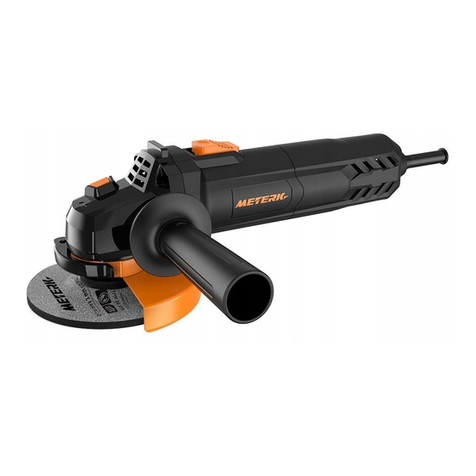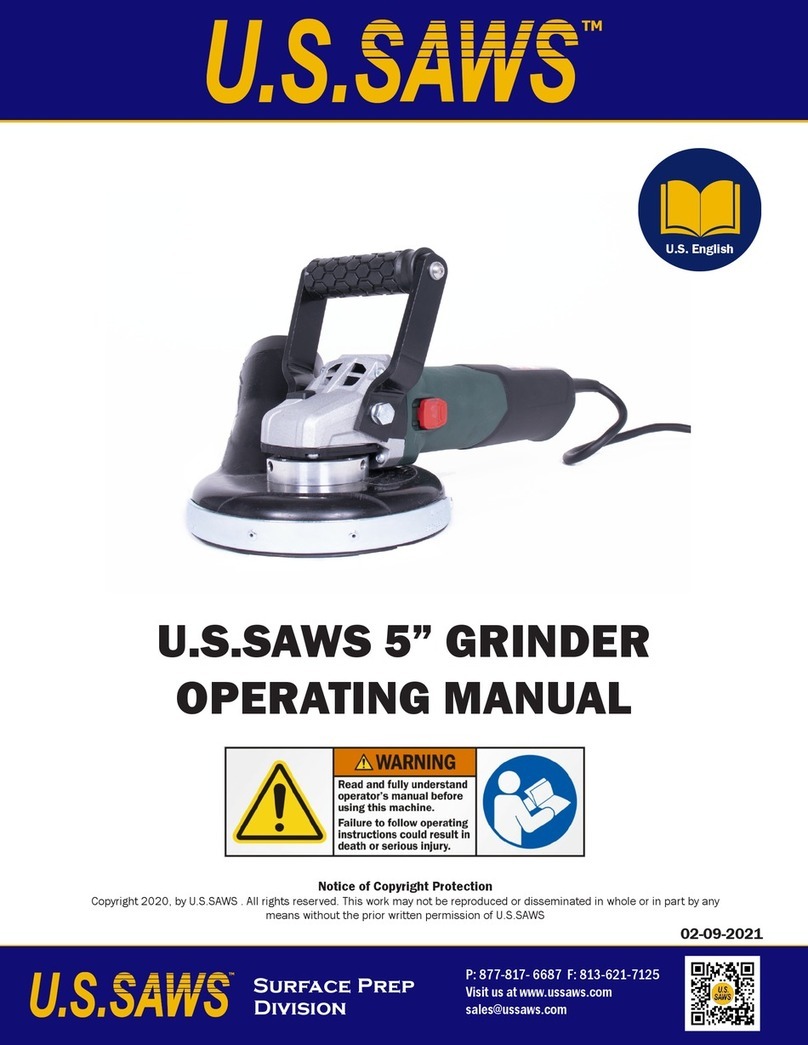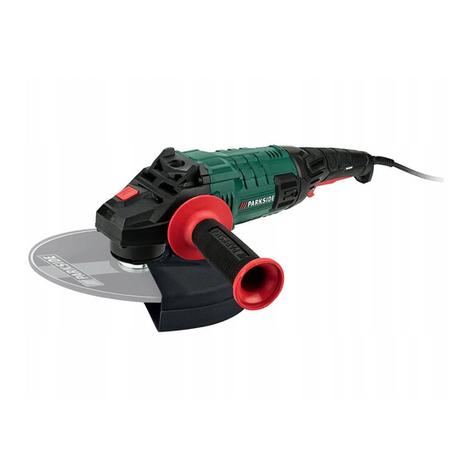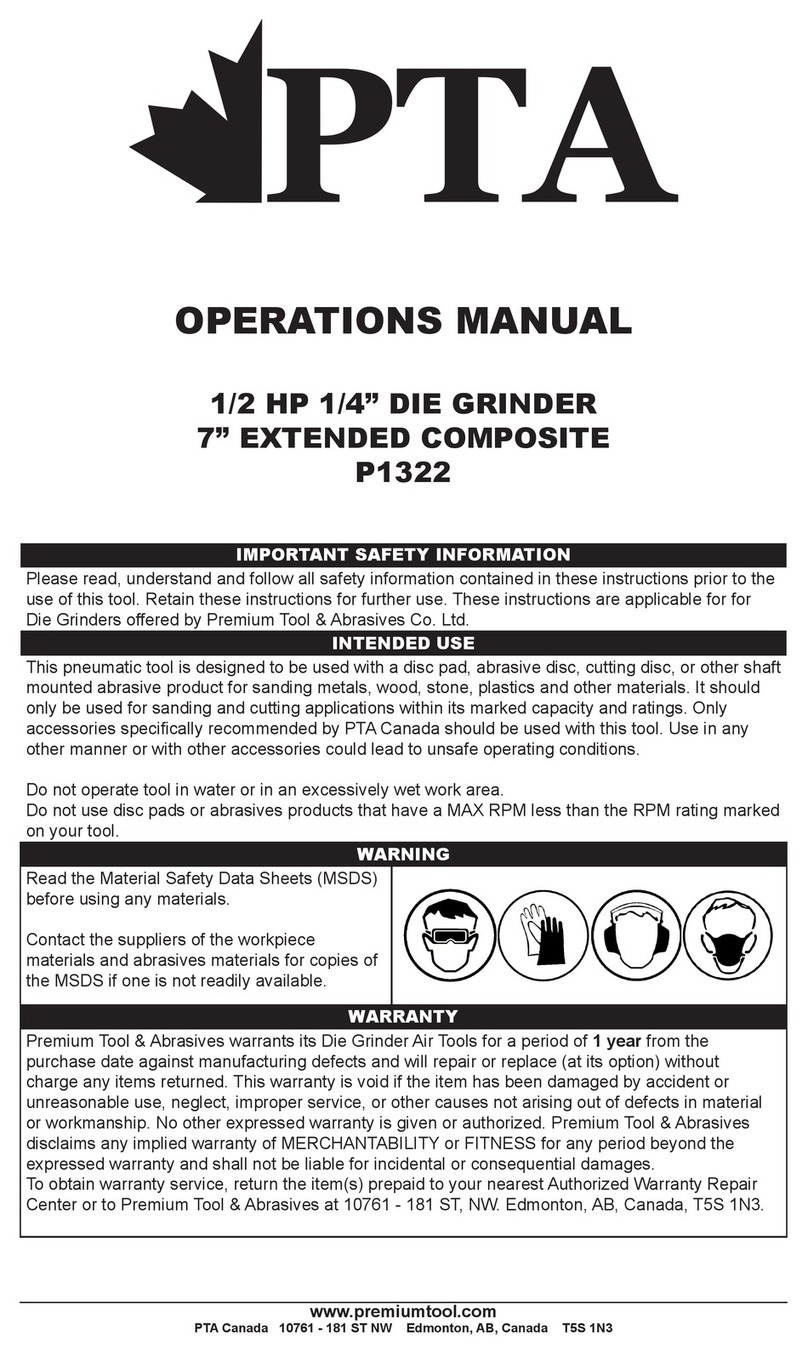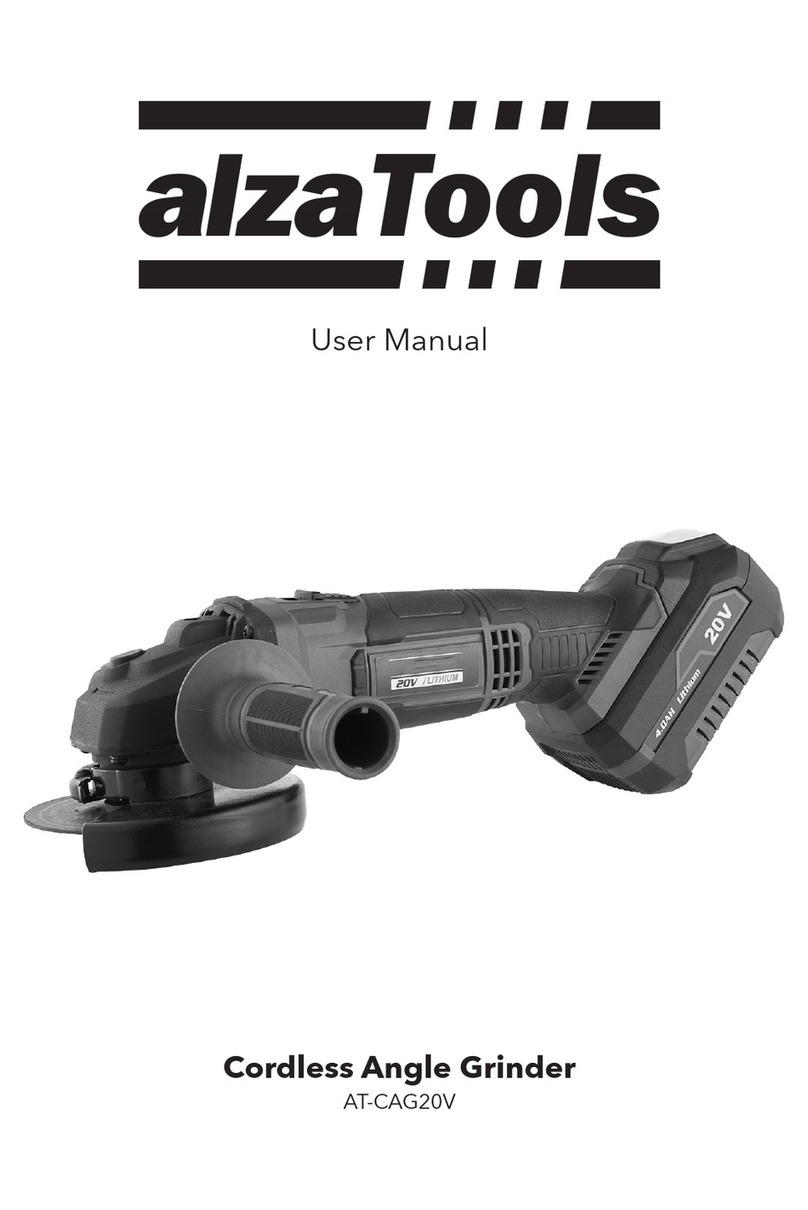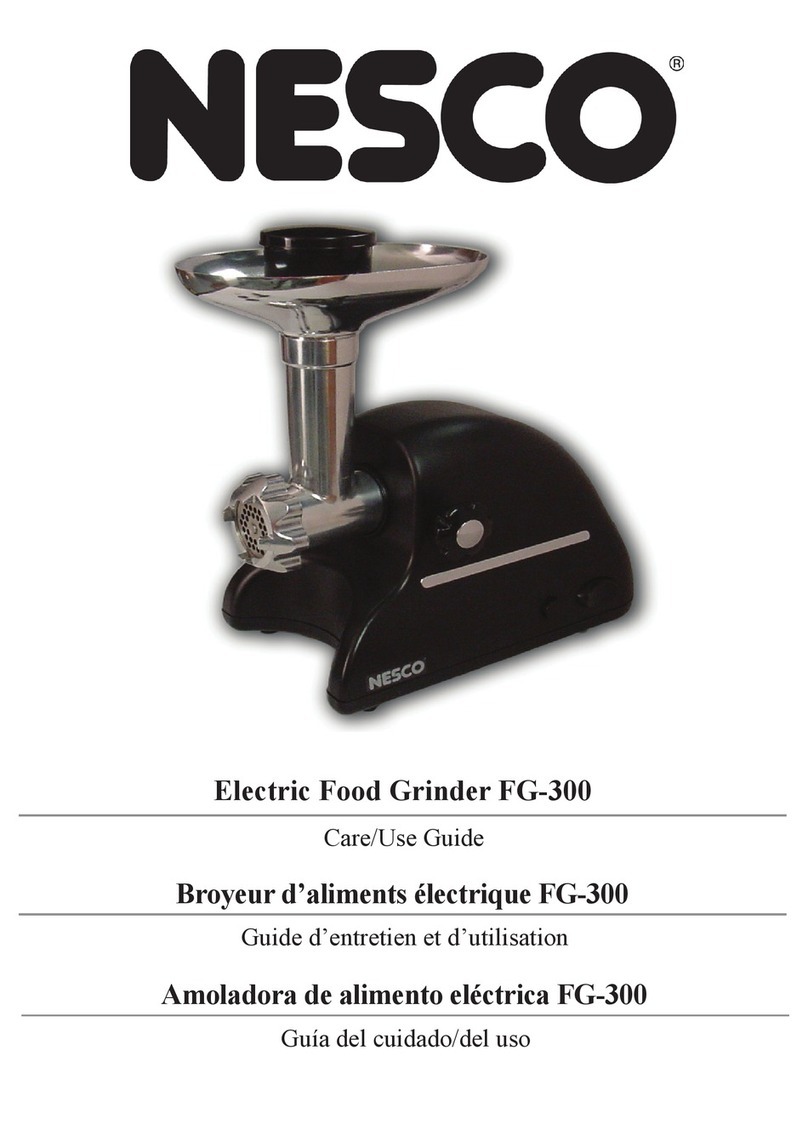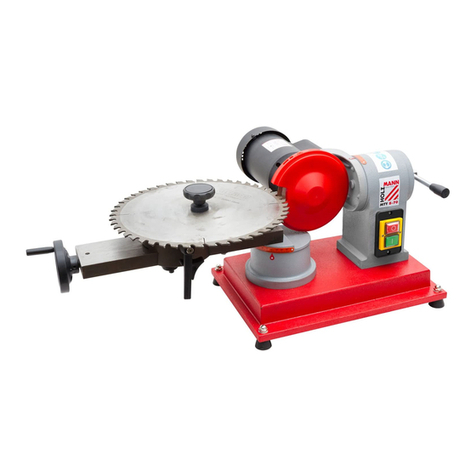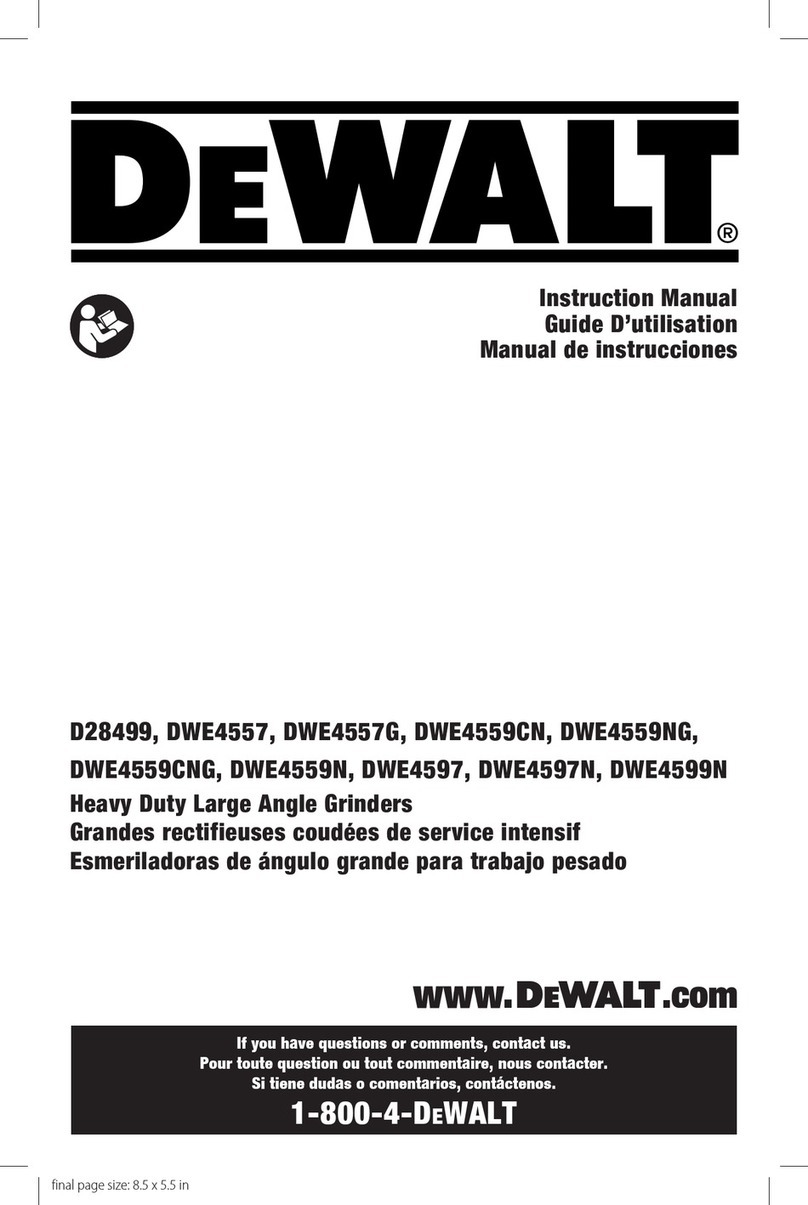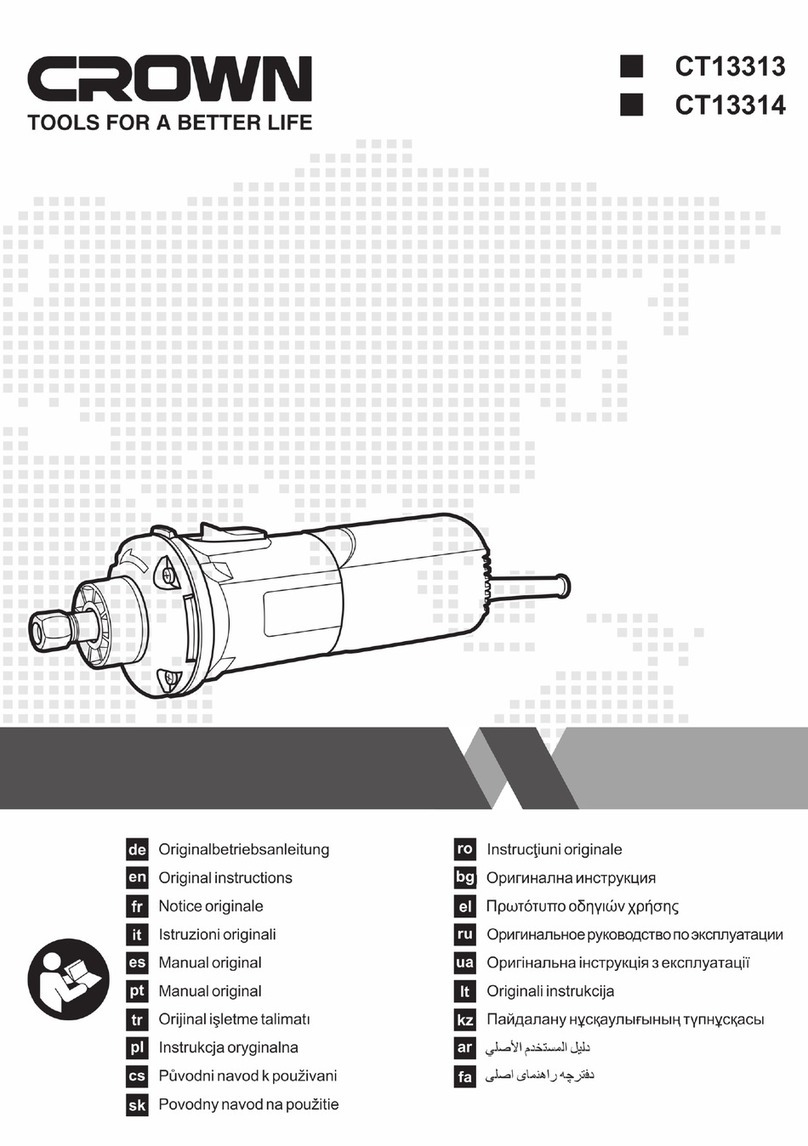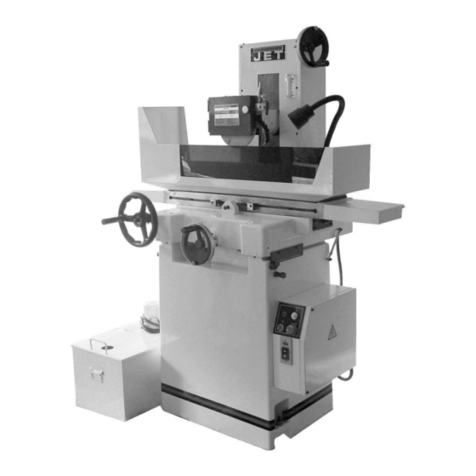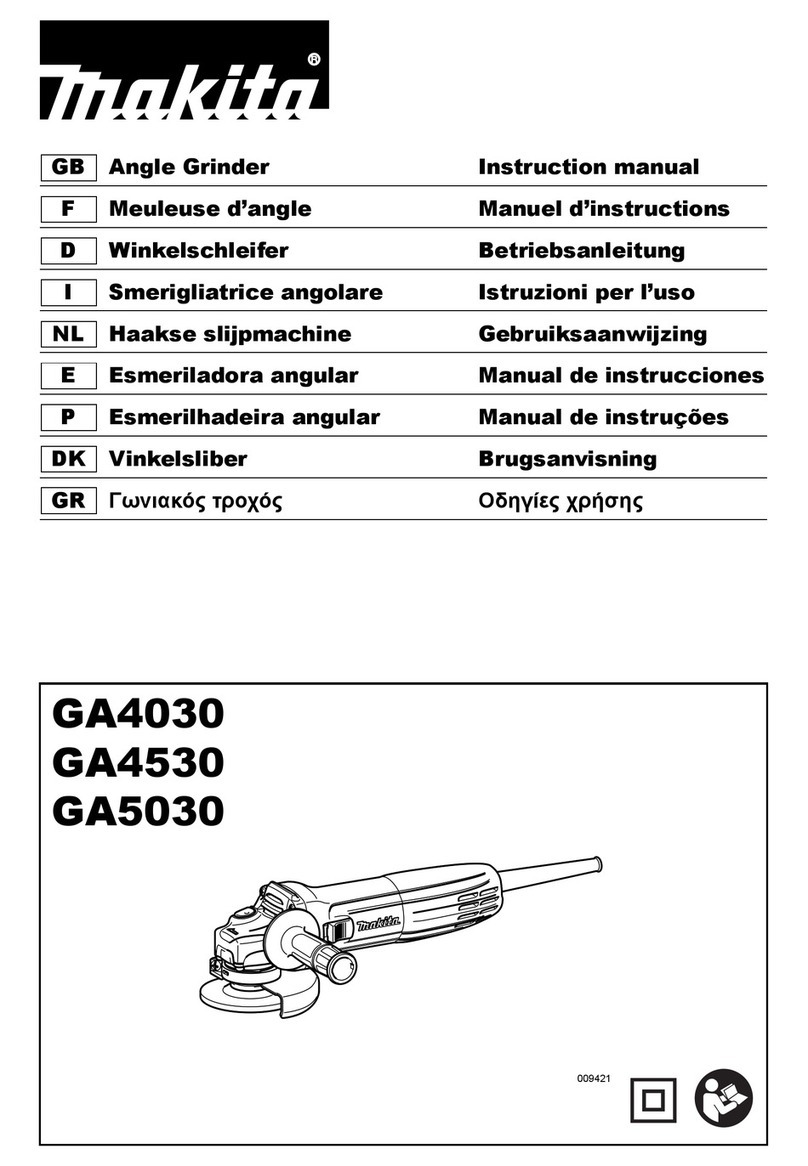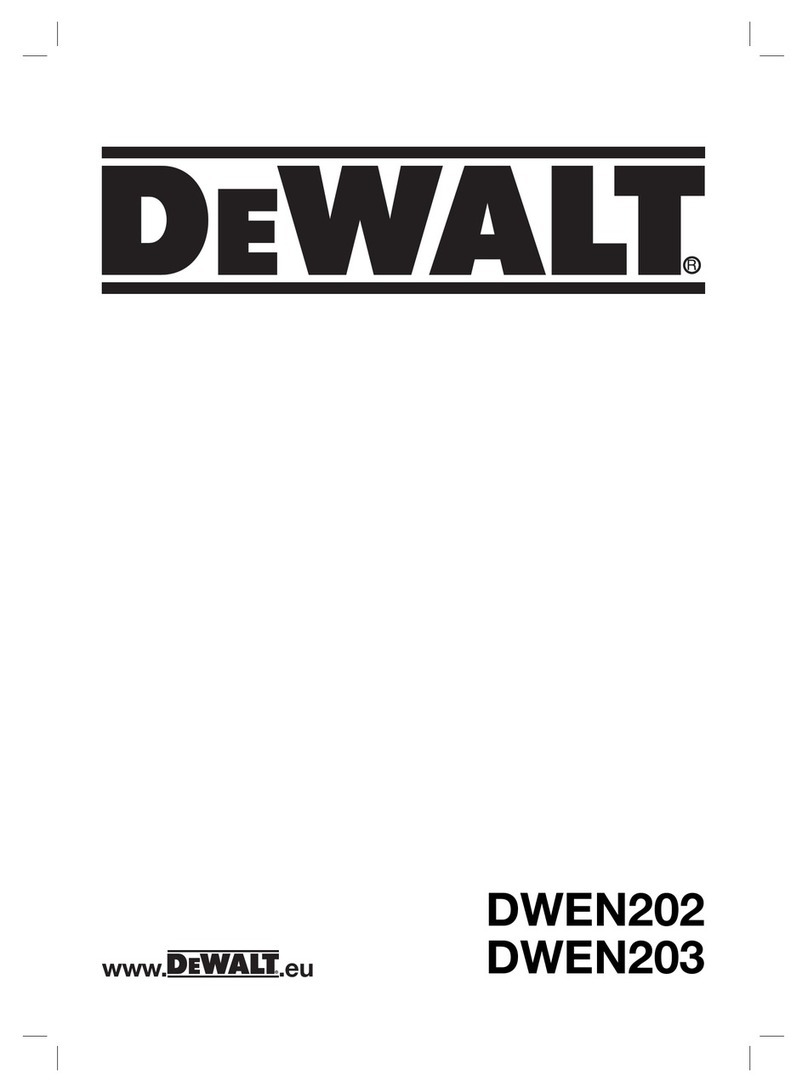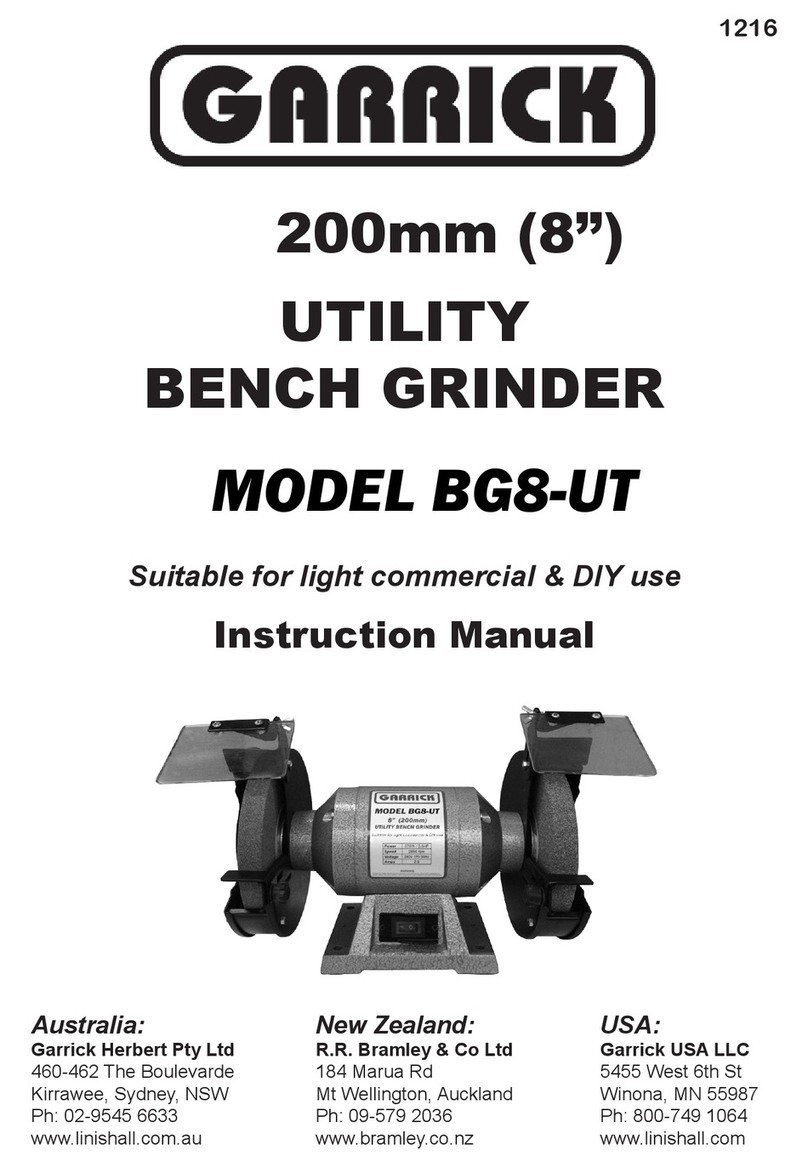
6ENGLISH
er tool as before the repair.
SAFETY INSTRUCTIONS COMMON TO GRIND-
ING, SURFACE GRINDING, WIRE BRUSHING,
POLISHING OR ABRASIVE CUTTING WORK.
1. This electromechanical tool is intended for use
as a grinder, surface grinder, wire brush grind-
er, polisher or cutting tool. All safety warnings,
instructions, illustrations and specifications
given for this electromechanical tool must be
read. Failure to follow all instructions below
may result in electric shock, fire and/or serious
injury.
2. It is not recommended to carry out work such
as grinding, surface grinding, wire grinding,
polishing or cutting with this tool. Performing
work for which this tool is not intended can cre-
ate risk and cause personal injury.
3. Accessories that are not specifically designed
and recommended by the tool manufacturer
must not be used. Just because an accessory
can be attached to your tool does not guaran-
tee its safe operation.
4. The rated speed of the accessory must be at
least equal to the maximum speed marked on
the tool. Accessories that operate at speeds
higher than their rated speed may break and
fall apart.
5. The outer diameter and thickness of the acces-
sories must be within the nominal range for the
electromechanical tool. Accessories with the
wrong size cannot be adequately protected or
controlled.
6. The clamping dimensions of discs, flanges,
washers and other accessories must be suita-
ble for mounting on the tool spindle. Accesso-
ries with clamping holes that do not match the
mounting dimensions of the power tool will be
unbalanced, may vibrate excessively and may
cause loss of control.
7. Damaged accessories must not be used
Check accessories before each use: chips and
cracks on grinding wheels, tears or excessive
wear on backing pads, loose or broken wires
on wire brushes. If the accessory or tool has
been dropped, check for damage or reinstall
undamaged accessories. After checking and
fitting the attachment, the operator and any by-
standers must be positioned out of the plane
of the rotating attachment and the tool should
be allowed to idle at maximum speed for one
minute. During this test period, damaged ac-
cessories will usually break or disintegrate.
8. Personal protective equipment must be used.
Depending on the application, a face shield
or safety goggles must be worn. A dust mask,
hearing protection, gloves and an apron capa-
ble of retaining small fragments of abrasions or
workpieces must be used to the appropriate
extent. Eye protection must be able to retain
flying debris that arises during various work
activities. The dust mask or respirator must be
able to filter out the particles that form during
the activity. Prolonged exposure to high-inten-
sity noise can cause hearing loss.
9. Any bystander must remain at a safe distance
from the work area. Everyone entering the work
area must use personal protective equipment.
Fragments of the workpiece or damaged ac-
cessories can fly off and cause injuries even
outside the immediate work area.
10.When performing an operation where the cut-
ting tool may come into contact with a hidden
guide or its own power supply, the power tool
must be held only by the insulated gripping
surfaces. Contact of a cutting tool with a "live"
wire can cause uninsulated metal parts of the
power tool to become "live" and cause an elec-
tric shock to the user
11.The flexible feed must be located out of reach
of the rotating tool. If the operator loses con-
trol, the moving feed may be cut or reground,
and the operator's hand or arms may be pulled
into the rotating tool.
12.Electromechanical tools must never be stored
until the tool has come to a complete stop. The
rotating tool can catch on the surface and pull
the tool out of the operator's control.
13.Electromechanical tools must never be started
when being carried by the operator. The rotat-
ing tool can get caught on the operator’s cloth-
ing and be pulled against the body.
14.The air vents on the tool must be regularly
cleaned. The motor fan draws dust into the
cabinet, and excessive accumulation of metal
dust can cause electrical hazards.
15.Electromechanical tools must not be used
near flammable materials. These materials
could ignite from sparks.
16.Accessories requiring cooling by liquid must
not be used. The use of water or other coolants
SAFETY INSTRUCTIONS
